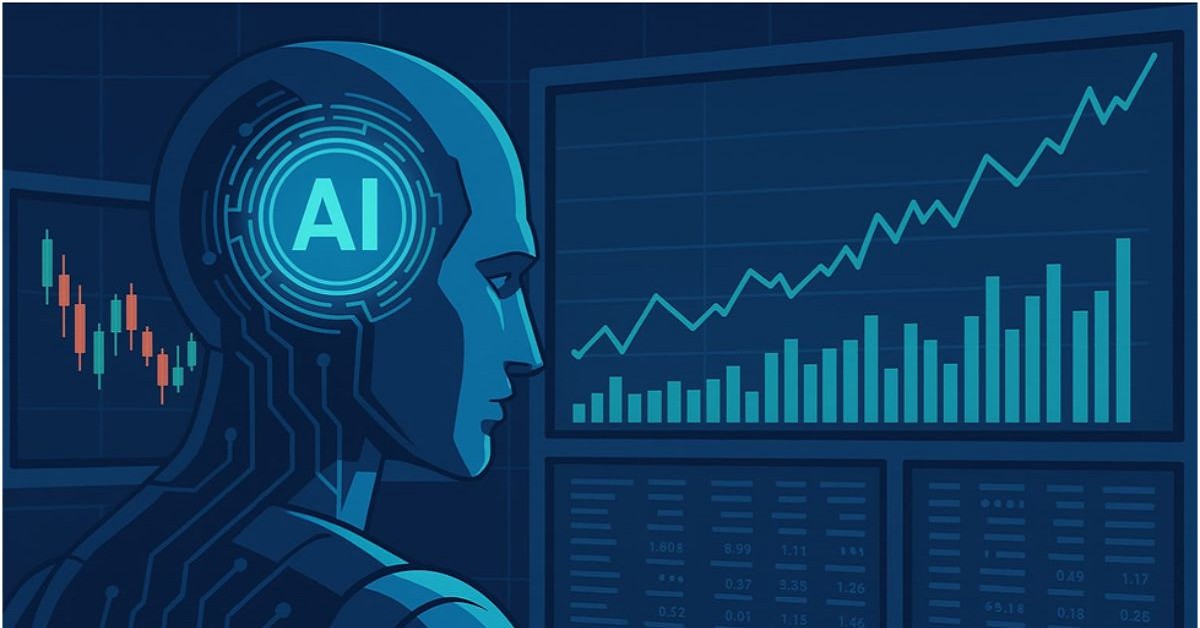The financial markets, characterized by their immense complexity, volatility, and constant influx of data, have always been a fertile ground for technological innovation. Artificial Intelligence (AI) has emerged as a transformative force in recent years, fundamentally reshaping how traders approach Contracts for Difference (CFDs). CFDs, leveraged financial instruments that allow speculation on the price movements of underlying assets without physical ownership, present significant opportunities and inherent risks. Through its unparalleled ability to process vast datasets, identify intricate patterns, and execute decisions with lightning speed, AI provides a powerful new toolkit for CFD traders, from seasoned professionals to burgeoning retail participants.
This article will delve into AI's profound impact on CFD trading, exploring its core applications, the tangible benefits it offers, the critical challenges and risks associated with its adoption, and the exciting future it portends for this dynamic segment of the financial world.

Understanding the AI Revolution in CFD Trading
At its core, AI in CFD trading refers to applying advanced computational models, machine learning algorithms, and predictive analytics to enhance every facet of the trading process. Unlike traditional, manual trading, which relies heavily on human intuition, chart analysis, and news interpretation, AI-powered systems can analyze immense volumes of historical and real-time market data in milliseconds. This enables them to identify subtle patterns and correlations often imperceptible to the human eye, predict future price movements with higher accuracy, and even execute trades automatically based on predefined criteria.
The "intelligence" of these systems comes from their ability to learn and adapt. Machine learning models, a subset of AI, continuously refine their strategies as they encounter new data and observe the outcomes of their past actions. This self-improvement capability is a significant differentiator, allowing AI systems to remain relevant and effective in ever-evolving market conditions.
Key Applications of AI in CFD Trading
AI's influence in CFD trading spans a broad spectrum of applications, each designed to provide traders with a distinct advantage:
Predictive Analytics: Forecasting Market Movements with Precision
Predictive analytics is one of AI's most critical applications in CFD trading. AI models, particularly those leveraging deep learning, can analyze historical price data, trading volumes, economic indicators, geopolitical events, and even social media sentiment to forecast future price movements. This goes far beyond traditional technical analysis, which relies on predefined patterns. AI can uncover complex, non-linear relationships between seemingly disparate data points.
For CFD traders, this means:
- Anticipating Price Reversals: Identifying potential turning points in trends.
- Identifying Support and Resistance Levels: Pinpointing key price barriers more accurately.
- Forecasting Volatility: Predicting periods of high or low market movement to adjust trading strategies accordingly.
- Predicting Economic Impacts: Analyzing how macroeconomic news or central bank announcements might affect specific assets.
Algorithmic Trading and Automated Execution: Speed and Precision
AI-powered algorithms are at the forefront of modern CFD trading. These algorithms execute trades based on predefined rules, which can be simple (e.g., "buy when the price crosses a moving average") or incredibly complex (e.g., incorporating multiple indicators, sentiment analysis, and real-time news feeds). The key advantages for CFD traders are:
Elimination of Emotional Bias: AI systems operate purely on data and logic, removing the detrimental impact of fear, greed, or impulsive decisions that often plague human traders.
24/7 Market Monitoring: AI bots can continuously monitor multiple markets and instruments around the clock, even when the trader is asleep, ensuring no opportunity is missed.
Optimization of Entry and Exit Points: Algorithms can be trained to identify optimal entry and exit points more precisely, maximizing potential profits and minimizing losses.
Sentiment Analysis: Decoding Market Psychology
Market sentiment - the overall mood or attitude of investors towards a particular asset or the market as a whole - is a powerful driver of price movements. Through Natural Language Processing (NLP), AI can analyze vast amounts of unstructured text data from sources like news articles, financial reports, social media posts, forums, and even regulatory filings.
For CFD traders, sentiment analysis provides:
- Early Detection of Sentiment Shifts: Spotting changes in market mood before they are reflected in price action.
- Identification of Trends Driven by Public Opinion: Understanding how collective investor psychology might influence asset prices.
- Complementing Technical and Fundamental Analysis: Adding a layer of qualitative insight to quantitative data.
- Filtering Noise: Distinguishing genuinely impactful news from irrelevant chatter.
Risk Management and Portfolio Optimization: Smarter Capital Protection
Given the leveraged nature of CFDs, robust risk management is paramount. AI excels at processing and analyzing complex risk factors in real-time.
- Automated Risk Assessment: AI models can assess risk levels for individual trades and entire portfolios based on historical volatility, correlation between assets, and market conditions.
- Dynamic Stop-Loss and Take-Profit Levels: AI can recommend or automatically adjust stop-loss and take-profit orders based on evolving market conditions, rather than static predetermined levels.
- Portfolio Diversification: AI can identify optimal asset allocations to minimize risk while maximizing potential returns, even across a diverse CFD portfolio covering various asset classes (forex, commodities, indices, stocks).
- Fraud Detection: AI can monitor trading patterns for unusual activities that might indicate fraudulent behavior, protecting both traders and brokers.
Back Testing and Strategy Optimization: Refining the Edge
Before deploying any CFD trading strategy, it's crucial to test its effectiveness using historical data. AI significantly enhances this process:
- Rapid Back testing: AI can run simulations of strategies against years of historical data in minutes or seconds, far faster than manual methods.
- Parameter Optimization: AI algorithms can automatically adjust and refine strategy parameters (e.g., indicator settings, timeframes, trade size) to find the most profitable and robust configurations.
- Walk-Forward Optimization: More advanced AI can perform walk-forward optimization, which simulates trading over different historical periods to ensure a strategy isn't "overfit" to a single dataset and remains effective in varied market regimes.
Challenges and Risks of AI in CFD Trading
Despite its revolutionary potential, AI adoption in CFD trading is not without its challenges and risks:
- Data Quality and Availability: AI models are only as good as the data they are trained on. Poor quality, incomplete, or biased data can lead to flawed predictions and sub-optimal trading decisions. Access to comprehensive, clean, and real-time data can also be costly.
- Overfitting: AI models trained too rigorously on historical data might perform exceptionally well on past data but fail spectacularly in live markets. This "overfitting" means the model has memorized noise rather than learning underlying patterns.
- "Black Box" Problem: Many complex AI models, intense learning networks, can be difficult to interpret. Understanding why an AI made a particular trading decision can be challenging, leading to a "black box" problem where traders might be hesitant to trust the system fully.
- Algorithmic Errors and Bugs: Like any software, AI algorithms can have bugs or logical flaws that could lead to significant financial losses if not identified and corrected promptly.
- Cybersecurity Risks: As highly connected and data-intensive, AI-powered trading systems are attractive targets for cyberattacks. Breaches could lead to financial losses, data theft, or market manipulation.
- Rapid Market Evolution: Markets are constantly changing, and what works today might not work tomorrow. AI models need continuous monitoring, retraining, and adaptation to remain effective, which requires ongoing effort.
- Regulatory Scrutiny: As AI becomes more prevalent in financial markets, regulators increasingly scrutinize its use to ensure fairness, prevent market manipulation, and protect investors.
The Future of AI in CFD Trading: Augmentation and Evolution
AI's future in CFD trading will likely be characterized by continued innovation and an increasing symbiotic relationship between human traders and intelligent machines. Rather than replacing human traders, AI will increasingly serve as a powerful augmentation tool, enabling traders to make more informed decisions, execute strategies more precisely, and manage risk more effectively.
Key trends include
- Hybrid Trading Models: The most successful CFD traders will likely combine AI-driven insights and automation with human intuition, strategic oversight, and adaptability to unforeseen circumstances.
- Democratization of Tools: More user-friendly, cloud-based AI tools and platforms will emerge, making advanced analytical capabilities accessible to a broader range of retail CFD traders without requiring deep coding knowledge.
- Explainable AI (XAI): Research into XAI will aim to make AI models more transparent and interpretable, addressing the "black box" problem and building greater trust in AI-driven decisions.
- Advanced Data Integration: AI systems will integrate an even wider array of alternative data sources, including satellite imagery for commodity tracking, geolocation data for economic activity, and advanced biometric data for sentiment analysis.
- Reinforcement Learning: This branch of AI, where algorithms learn by trial and error in simulated environments, will become more prominent for developing adaptive and robust CFD trading strategies.
- Personalized Trading Experiences: AI can analyze a trader's risk tolerance, trading style, and past performance to offer highly customized recommendations and automated strategies.
The Bottom Line
AI is fundamentally transforming the landscape of CFD trading, offering unprecedented capabilities for market analysis, strategy execution, risk management, and continuous learning. For traders willing to embrace this technological shift, AI provides a potent algorithmic edge, enabling them to navigate the complexities of leveraged markets with greater efficiency, precision, and objectivity.
However, it is crucial to approach AI adoption with a clear understanding of its limitations and risks. Success in AI-driven CFD trading will depend on high-quality data, continuous monitoring, robust risk management protocols, and a commitment to lifelong learning. As AI technology continues to evolve, the CFD market will become increasingly sophisticated, demanding a new breed of traders who can effectively leverage the power of intelligent machines to achieve their financial goals. The future of CFD trading is undoubtedly clever, and those who harness the power of AI will be best positioned to thrive in this algorithmic era.







 CAclubindia
CAclubindia
